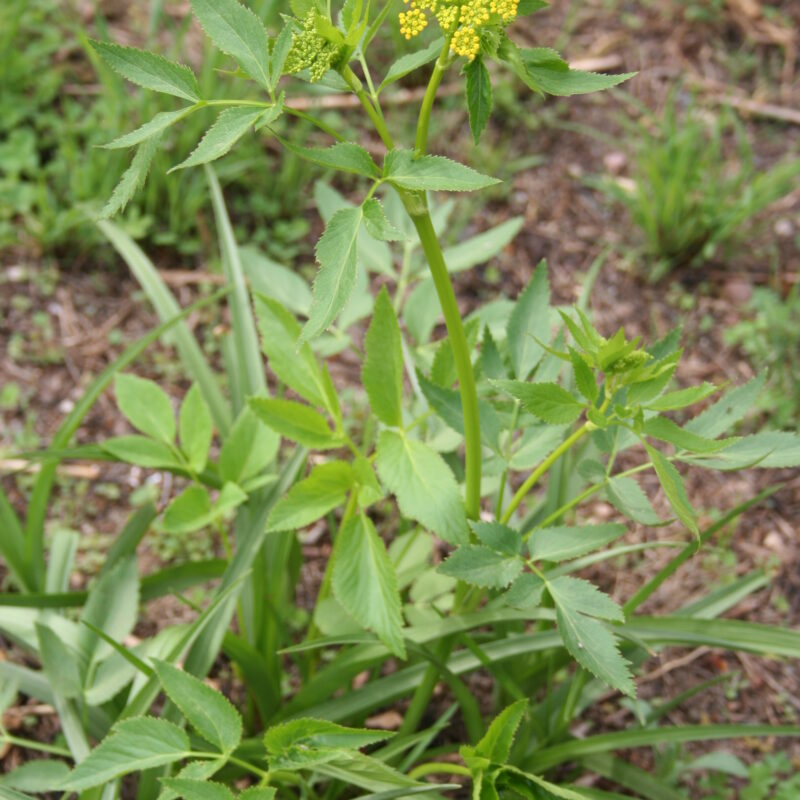Heart-leaved Golden AlexanderZizia aptera
Heart-leaved Golden Alexander sports tufts of delicate yellow flowers that bloom early into the spring season. It is an important source of nectar for short-tongued insects that can easily reach into the flowers.
USDA symbol: ZIAP
General Information
| Plant Type | Forb |
|---|---|
| Height | 3 feet |
| Light Exposure | Sun |
| Soil Moisture | Dry |
| Bloom Color | Yellow |

Tolerances
| Flooding / Inundation Tolerance | High |
|---|---|
| General Resilience | 6 |
| Salt Tolerance | Medium |
| Stress Tolerance | Alkaline Conditions, Drought Tolerant, General Disturbance |
Pollinator Value: Very High
| Bloom Months | May to June |
|---|---|
| Larval Host of | Bees |
| Specific Pollinators Hosted | Andrena vernalis, Andrena ziziae, Hylaeus sparsus |
| Pollinator Benefit | Insect Pollinated, Provides Nectar, Stem Nesting, Supports Generalists |
Project Planning
| Project Type | Boulevard, Rain Garden, Shoreline Buffer |
|---|---|
| Coefficient of Conservatism | 7 |
| Herbivore Sensitivity | Medium |
| Lifespan | Perennial |
| Rate of Spread | Fast |
| Soil Stabilization | Deep |
| Vegetative Reproduction | Absent |
Range
| County | Anoka, Becker, Beltrami, Benton, Big Stone, Blue Earth, Brown, Cass, Chippewa, Chisago, Clay, Clearwater, Cook, Cottonwood, Crow Wing, Dakota, Dodge, Douglas, Faribault, Fillmore, Freeborn, Goodhue, Grant, Hennepin, Houston, Hubbard, Isanti, Itasca, Jackson, Kandiyohi, Kittson, Koochiching, Lac qui Parle, Lake, Lincoln, Lyon, Mahnomen, Marshall, Martin, McLeod, Meeker, Morrison, Mower, Murray, Nicollet, Nobles, Norman, Olmsted, Otter Tail, Pennington, Pine, Pipestone, Polk, Pope, Red Lake, Redwood, Renville, Rock, Roseau, Sherburne, Sibley, St. Louis, Stearns, Steele, Stevens, Swift, Todd, Traverse, Wabasha, Wadena, Waseca, Washington, Watonwan, Wilkin, Winona, Wright, Yellow Medicine |
|---|---|
| Ecoregion | Driftless Area, Lake Agassiz Plain, North Central Hardwood Forests, Northern Glaciated Plains, Northern Lakes and Forests, Northern Minnesota Wetlands, Western Cornbelt Plains |
| Approximate Eco Province | Eastern Broadleaf Forest, Laurentian Mixed Forest, Prairie Parkland, Tallgrass Aspen Parklands |
